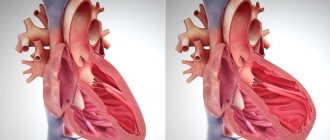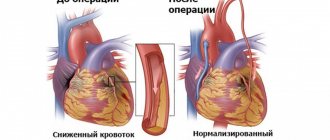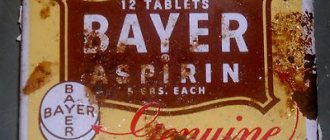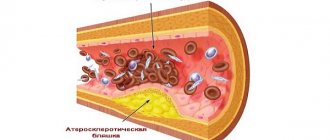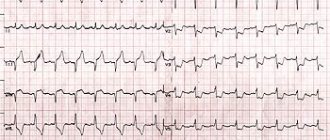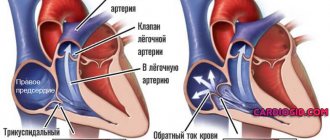Heart failure is the inability of the heart to pump the amount of blood the body needs. This disease occurs as a result of past infectious diseases. Heart failure is the most common cause of sudden death in pets. It affects not only dogs, but also cats.
Types of heart failure:
- Chronic heart failure. It develops slowly, sometimes imperceptibly, but at the same time, steadily.
- Acute heart failure develops quite rapidly, its time varying from several minutes to several hours.
As a result of the acute form, the cat instantly develops pulmonary edema, symptoms of which may include blood discharge from the mouth and nose, as well as shortness of breath.
Stress-induced feline cardiomyopathy
This form of cardiomyopathy develops in completely healthy cats after exposure to a stress factor. Most often this occurs within 1-30 days after planned surgical interventions (castration and sterilization). The disease is characterized by temporary thickening of the myocardium of the left ventricle, probably due to inflammation of the heart muscle, the relaxation processes of the heart are disrupted, which leads to the fact that the left ventricle is not able to pump out all the blood from the pulmonary circulation. The pressure in the pulmonary veins and left atrium increases and congestive heart failure develops, which manifests itself in the form of pulmonary edema or hydrothorax.
Signs
Typical symptoms:
- dyspnea;
- difficulty breathing, suffocation;
- wheezing;
- weakness, lethargy;
- weak pulse;
- pale mucous membranes;
- the appearance of pink foam from the mouth.
It is not typical for cats, unlike dogs, to breathe with their mouths open even in the heat or during physical exertion, this is important to remember. Cats are sprinters, they are adapted to high, but very short-term loads, in contrast to dogs, adapted to long-term endurance loads. If a cat breathes with its mouth open even after minor exertion, this is a reason to take it to a cardiologist for a full examination. If this is accompanied by other symptoms - weakness, lethargy, change in color of the mucous membranes (turn pale, blue, purple), it is necessary to urgently take her to the clinic in the intensive care unit.
Arterial thromboembolism in cats
Thromboembolism (formation of blood clots) and heart failure in cats are common diseases of the heart and blood vessels.
Thromboembolism occurs when blood clots form in one of the chambers of the heart and then break off and travel through the bloodstream. Eventually, these blood clots enter the blood vessel and can block its lumen.
Although a clot can occlude any vessel, the most common site for feline arterial thromboembolism is the terminal segment of the abdominal aorta, which supplies the hind legs.
This problem is called abdominal aortic thromboembolism. A blood clot in this area cuts off the blood supply to the hind legs. When this happens, the cat can no longer use its back legs properly and will drag its feet. This disease of the cardiovascular system is malignant and is characterized by high mortality.
Causes of heart failure
- Congenital heart pathologies. In cats they are quite rare, occurring in approximately 2% of all cases.
- Diseases of the heart muscle caused by infectious diseases.
- Cardiomyopathy, which is caused by an inadequate diet in cats. They, as a rule, do not receive enough taurine, which is part of raw fish and meat. During cooking, it is destroyed.
- Heartworms and their larvae are found in mosquitoes. They are microscopic in size. When a mosquito bites, their larvae enter the animal’s bloodstream and settle in the pulmonary artery. Heartworms can grow up to 30 centimeters in size. With their presence in the circulatory system, they interfere with the outflow of blood and cause enormous damage to the arteries. Adults entangle the heart, thereby interfering with its full functioning. Heartworms can be detected using a blood test.
- Age-related hormonal changes. Heart failure is thought to occur in cats over 6 years of age.
- Metabolic disease. Sometimes it is caused by improperly structured nutrition.
Cats should be periodically screened for heartworms to help prevent heart disease. If a taurine deficiency is noticed in a timely manner, it must be introduced into the cat’s food, due to which the vital activity of the heart muscle is restored.
Diagnostics
Diagnosis must be carried out by a qualified veterinary cardiologist in order to prescribe the correct treatment. Typically it includes:
- Blood analysis.
- Analysis of urine.
- Ultrasound.
- Chest X-ray.
- ECG.
If a cat has been diagnosed with heart failure, then it should be excluded from planning for breeding, since the hereditary factor plays an important role.
Congenital heart defects in cats
Congenital heart defects can also occur in cats. There are several types of birth defects that can be seen in feline cardiology.
Sometimes there is malformation (also known as dysplasia) of the heart valves.
Ventricular septal defects are essentially “holes” that occur between the two ventricles of the heart. These defects are sometimes diagnosed in cats.
Atrial septal defects and "holes" that occur between the two atria of the cat's heart rather than the ventricles can also occur.
Other rare defects include patent ductus arteriosus, aortic stenosis, and tetralogy of Fallot. Patent ductus arteriosus is an abnormal vessel connecting the aorta and pulmonary artery that causes blood to bypass the heart. Aortic stenosis is a narrowing of the large vessel known as the aorta, which leaves the left ventricle of the heart and carries blood to the rest of the body. Tetralogy of Fallot is a combination of four separate developmental defects in the heart.
Diagnostics
At the appointment, the doctor assesses the patient’s condition (quality of pulse, heart rate, presence of wheezing in the lungs, color of mucous membranes). To clarify the diagnosis, a chest x-ray is taken. Next, the animal is placed in the intensive care unit, where a complex of resuscitation measures is carried out.
Mandatory laboratory diagnostics include general clinical and biochemical blood tests.
A complete cardiac examination is carried out only after the patient has been stabilized and necessarily includes echocardiography of the heart.
Myocardial infarction and coronary syndrome in cats
Myocardial infarctions similar to those in human patients do not occur in cats. Microscopic myocardial infarctions are common in cats. This problem occurs in any form of cardiovascular disease. Such processes are the cause of the formation of “burn-out” cardiomyopathy in cats. This heart disease can be considered as a transformation of the HCM phenotype into DCM.
Identifying and analyzing signs of heart disease in cats is a complex process. Correct diagnosis of the cause of heart disease is necessary to determine the correct course of treatment, as well as determine the prognosis and management of a sick cat.
In the veterinary city of Serpukhov, the appointment is conducted by cardiologist Andrey Anatolyevich Rudenko. Our clinic has a full range of diagnostic equipment to determine the nosological form of heart disease in your domestic cat.
Symptoms
Symptoms of heart disease in cats are not always visible, but she cannot complain about her health. Therefore, the health of the pet is entirely in the hands of the owner. He must monitor his pet and, upon discovering the first symptoms of the disease, should seek advice from a veterinarian.
A cat's panting with a protruding tongue is a sign of heart disease.
- Fatigue is difficult to notice in a cat, since it leads a generally quiet lifestyle.
- Dyspnea. Breathing occurs through the abdomen, without the participation of the chest.
- An attack accompanied by loss of consciousness. The cat, at this time, can be mistaken for a dead animal. Usually the attack passes quickly, but it happens that pets die, as their body experiences an acute lack of oxygen.
- The animal wheezes and meows terribly.
- Heavy breathing indicates pulmonary edema.
- Complete or partial paralysis of the hind legs.
- Cardiopalmus.
- Cyanosis of the gums.
- Loss of appetite.
In cats, coughing is not a cardiac symptom.
First aid for a cat who faints
The onset of an attack requires quick and correct actions by the owner, since, sometimes, it can end in death.
- Lay the cat down, and it is necessary to give her a side position of her head.
- Pull out your tongue.
- Place a cool compress on your head.
- Place cotton wool soaked in ammonia to your nose.
- The paws must be fixed higher than the head, so there will be more blood flow to the head.
- Call your veterinarian.
How to distinguish a healthy cat from a sick one
Since cats generally lead a calm lifestyle, they are couch potatoes, not all owners can distinguish a healthy animal from a sick one. She can report any changes in well-being by changing her behavior, that is, if the cat used to behave independently of the owner, but now does not leave him, then this indicates that something is bothering her.
Some people think that purring in cats is a sign of health. This is wrong. Purring, abruptly replaced by aggression or growling, indicates that she is in pain.
A healthy animal has:
- Smooth wool.
- The nose is wet and cold.
- The mucous membranes of the eyes are pinkish in color.
- The animal is vigorous and active.
Sick animal:
- Lethargic, lies more than usual.
- He tries to get away from everyone to a secluded place.
- Can be very excited.
- The meow is pitiful.
- Movements are clumsy.
- The nose is warm with cracks.
Treatment and prevention
Self-medication if a cat has a heart disease, regardless of the degree of complexity, can lead to serious consequences. Therapy should be prescribed by the attending veterinarian, having the diagnostic results in hand. The choice of methods depends on the form, stage, complexity of cardiovascular pathology, as well as on the age, physiological state of the animals, and the root cause.
Important! If the pathology is detected at the initial stage of development, the animal is registered with the veterinary clinic. In the future, the veterinarian-cardiologist monitors the treatment and condition of the sick patient.
Treatment of most heart diseases in the early stages of development involves drug therapy. Cardiac glycosides, anticoagulants, drugs that normalize heartbeat, blood pressure, diuretics, restoratives, and symptomatic drugs in injections or tablets are used. Animals are prescribed a special diet, medicinal feed, enzyme agents, vitamins, mineral supplements, and immunomodulators.
The main goal of cardiac therapy is to normalize the functioning of the heart, stop destructive processes in the organ, improve the condition of blood vessels, prevent the formation of blood clots, and correct blood pressure. For each individual pathology, appropriate treatment and certain medications are prescribed.
Sick pets require optimal living conditions and a complete fortified diet. Food should contain proteins, taurine, vitamin A, B3, B6, B12, calcium, phosphorus, magnesium, iron, essential amino acids. It is very important to protect cats from stress, which not only disrupts the functioning of the heart, but also weakens the body.
In severe cases, to eliminate anatomical defects, if drug treatment does not produce results, surgical treatment is used, after which maintenance therapy is prescribed. If it is not possible to completely restore organ function, cats are prescribed lifelong treatment.
What is the cause of cardiomyopathy?
In most cases, veterinarians recognize the innate genetic and breed affiliation of cats with HCM. Possible provoking factors include:
- hyperthyroidism, acromegaly;
- hypertension;
- taurine deficiency, unhealthy diet;
- infiltration processes in the heart muscle;
- lymphoma;
- toxins, drugs.
Among cats predisposed to HCM are Maine Coons, Siamese, Britons, Sphynxes and others; they are carriers of the gene that is responsible for the development of cardiomyopathy. The higher the purity of the blood of elite cats, the more likely it is that they will have a lot of diseases of internal organs during examination.
Hypertrophic cardiomyopathy is the most common heart disease in cats. Interview with a cardiologist
We talked about the most common cardiac disease in cats with the head of the cardiology department, veterinary cardiologist, candidate of biological sciences Vladislava Konstantinovna Illarionova.
— Do cats have heart disease?
- Yes, there are. A cat's small heart can indeed be unhealthy, and the most common pathology is a chronic heart muscle disease called cardiomyopathy. In fact, cardiomyopathies are a whole group of myocardial diseases that slowly progress and in some animals lead to chronic heart failure, blood clots and sudden death. Heart disease is one of the ten most common causes of death in cats.
— What heart disease is most common in cats?
— Hypertrophic cardiomyopathy is the most common form of feline cardiomyopathy. The disease is characterized by thickening of the heart muscle, which is called “hypertrophy”. This is a progressive pathology that hardens the walls of the heart, reducing the ability of the ventricular chambers to effectively draw in and eject blood. In addition, such changes in the myocardium can affect the functioning of the heart valves, causing incompetence that aggravates the pathological process. Often, transformations of the walls of the heart lead to the formation of fast flows in the chambers and vessels, which cause the characteristic noise heard with a stethoscope. With the development of heart failure, the body compensates for the circulatory deficiency by increasing the frequency of heart contractions, as well as retaining salt and water. For some time, such adaptation mechanisms maintain normal blood flow, but over time, the body's resources are depleted and clinical signs of the disease begin to develop.
— How common is this disease?
— Hypertrophic cardiomyopathy is detected in approximately 15% of cats in the general population. In older cats, the prevalence reaches 29%. Most cats with hypertrophic cardiomyopathy are asymptomatic, with an incidence of cardiac death of approximately 23% within 5 years, regardless of age at diagnosis.
— What is the reason for the development of the disease?
— Most often we call such diseases idiopathic, that is, without a clear cause. However, more and more data support the genetic nature of the pathology. Here, however, it is important to say that the possible reasons may be heterogeneous. Similar changes develop in the heart secondary to high blood pressure (which is not uncommon in cats) or chronic pathology of the thyroid gland. In addition, in cats, due to stress, a pathological process in the heart can acutely occur, which is called transient myocardial hypertrophy and is most likely associated with an inflammatory reaction of the heart muscle. Such changes are sometimes recorded in cats after general anesthesia, changes in their usual lifestyle, moving, the appearance of new members in the family, and so on. Clinically, this is manifested by shortness of breath and apathy, which usually occurs 3-5 days after the event.
— Which cats are predisposed to this disease?
— Although most cats with hypertrophic cardiomyopathy are mongrel, some breeds have an increased risk of developing the pathology. These include Maine Coons, Ragdolls, British Shorthairs, Persians, Bengals, Sphynxes, Norwegian Forest cats and Burmese. However, data on the prevalence of the disease in breeding animals of different breeds is not complete. Two contractile protein gene mutations have been identified in the myosin binding protein C (MyBPC3) gene. The estimated prevalence of the MyBPC3-A31P mutation in Maine Coon cats is 35% to 42%, which is significantly higher than the prevalence of the disease in this breed. Maine Coons homozygous for this mutation, ragdolls homozygous for the MyBPC3-R820W mutation, and kittens of affected animals are at risk of developing hypertrophic cardiomyopathy.
— If the hereditary nature of the disease is proven, is there a test for early detection of pathology?
— Genetic testing for the MyBPC3-A31P and MyBPC3-R820W mutations is recommended for Maine Coon and Ragdoll cats. Tests are carried out on animals involved in breeding in order to reduce the frequency of mutations in these breeds. It is recommended to remove from breeding cats homozygous for these mutations, but leave the possibility of crossing heterozygous animals with cats negative for mutations if they have outstanding breed characteristics. Genetic tests can also be used in non-breeding Maine Coon or Ragdoll cats to determine the relative risk of developing the disease. However, Maine Coon and Ragdoll cats that test negative for the MYBPC3 mutation also have hypertrophic cardiomyopathy and, therefore, the only reliable diagnostic method is regular echocardiographic examination. For cats of other breeds, genetic testing of the MYBPC3-A31P and MYBPC3-R820W mutations is not recommended, since these mutations have been identified only in Maine Coon and Ragdoll animals.
— What symptoms are typical for heart disease in cats?
— Chronic heart failure is the most common cause of clinical signs in cats with hypertrophic cardiomyopathy. In second place is arterial thromboembolism. Sudden death without clinical manifestations is recorded in a small number of patients. There are two main mechanisms for the development of symptoms. The first is associated with an increase in pressure in the veins of the lungs due to the fact that blood is poorly pumped by the heart - this leads to the sweating of its liquid part into the lung tissue. This condition is called “pulmonary edema” and can lead to the death of the animal. The main symptom is shortness of breath. The frequency of inhalations exceeds 30 per minute at rest or during sleep, movement of the chest becomes noticeable when breathing, and sometimes the mouth opens slightly. Often such signs are accompanied by depression, reluctance to play, communicate, and eat. The cat finds a secluded place and does not agree to be persuaded to leave. Pulmonary edema is often accompanied by the accumulation of free fluid in the chest, which further aggravates the condition.
The second mechanism for the development of symptoms is associated with the formation of blood clots in the cavity of the enlarged left atrium. Such blood clots form as a result of disruption of blood flow through the heart and can reach significant sizes. The greatest danger arises from the leaching of these clots into the systemic circulation. If a thrombus goes into the vessels of the systemic circulation, then the symptoms depend entirely on its diameter and location. Most often, the thrombus stops at the site of bifurcation of the abdominal aorta into the vessels of the pelvic limbs. This causes a sudden loss of support on the hind legs, severe pain and fear. The cat cannot get up and screams pitifully. This condition is very life-threatening and the prognosis is largely determined by the diameter of the blood clot and the time between the onset of symptoms and the start of treatment. If more than 4 hours pass from the moment of the first manifestations, the prognosis worsens significantly.
— How can this disease be diagnosed?
— The main method for diagnosing feline cardiomyopathies is echocardiographic examination (ultrasound of the heart). This is a method that provides comprehensive information about the structure and function of an organ. There are a number of clear criteria for identifying pathology, which are based on the anatomical landmarks of the thickness of the walls of the heart, the shape of the thickenings, the nature of the movement of the heart muscle, and the parameters of myocardial relaxation. In addition, there are signs by which the doctor can judge the risk of pulmonary edema and the presence of free fluid in the chest. Echocardiography is a very comfortable and safe method for our patients. It does not require anesthesia and is not associated with unpleasant sensations, so most cats tolerate it well. The study lasts about 20 - 30 minutes (sometimes a little more or less), after which the doctor carries out the necessary measurements and calculations and fills out a study protocol.
It must be said that cardiologists often do not limit themselves to one research method, but carry out diagnostics in a comprehensive manner. Therefore, after echocardiography, we proceed to an electrocardiographic study (ECG), which provides invaluable information about the heart rhythm. The condition of the lungs, respiratory tract, and vessels of the chest can be assessed using an X-ray examination, and if a detailed layer-by-layer view of all structures of the chest organs is necessary, computed tomography is performed. Another important step in diagnosing heart disease is measuring blood pressure. If the doctor still has doubts about the cause of the symptoms and he needs to differentiate the respiratory and cardiovascular systems according to the degree of importance of their influence on the formation of the clinical picture, then there is a diagnostic method such as determining the concentration in the blood or pleural fluid of natriuretic peptide, which is called a cardiac marker and increases with significant heart failure. Another auxiliary test is to determine the concentration in the blood of another cardiac marker - cardiac troponin I, which increases with the destruction of the myocardium and provides information about acute pathologies of the heart muscle, for example, such as transient myocardial hypertrophy (myocarditis).
— What is rapid echo screening?
“There are situations when life depends on emergency treatment measures. In this case, the doctor can simply "take a look" at the heart by performing a quick ultrasound examination of the chest. To do this, the cat is usually not fixed on its side, but screening is carried out in positions that are more comfortable for the animal - on the chest, standing or sitting. The fact is that if there is pulmonary edema or fluid accumulation in the chest, keeping the animal in a position on its side can cost it its life. Therefore, the doctor’s task is to quickly and with the least stress for the cat conduct a study for the presence of pulmonary edema, pleural effusion, and significant changes in the heart. This is necessary for choosing treatment tactics in the acute period and does not replace a full echocardiographic study after stabilization of the animal’s condition.
— Is it possible to cure the disease?
“Unfortunately, the vast majority of cardiomyopathies only change in the direction of worsening. The only exception is transient myocardial hypertrophy, which may completely resolve after a few months. However, treatment can prolong life and improve quality of life in patients with clinical signs. The main drugs for chronic therapy are diuretics, inhibitors of hormonal systems involved in the formation and development of heart failure, drugs that reduce the risk of thrombosis, antihypertensive and antiarrhythmic drugs, as well as drugs that improve the functioning of the heart muscle and dilate the blood vessels of the lungs.
— What do you need to know to properly care for a sick animal at home?
— A very important factor for cats is a calm and comfortable environment. Any changes in the usual environment have a bad effect on a sick animal. So you shouldn’t take other animals, change the cat’s diet or habitual lifestyle. It is very important to follow the medication administration schedule. Over time, this becomes a habit for both the owners and the patient. A great help for monitoring the condition of the animal is to count the frequency of respiratory movements. This procedure is usually carried out when the cat is calm or sleeping. To count, take a minute and record the number of breaths. The upper limit of normal is 30 breaths per minute, although in cases of severe chronic illness the frequency may be slightly higher. In any case, this should definitely be discussed with your doctor. In addition, it is necessary to discuss with the doctor the schedule of repeated examinations and the possibility of communication in emergency situations.
General trend in the treatment of heart diseases
If you notice characteristic signs of myocardial dysfunction in your pet, it is recommended to contact a veterinary clinic as soon as possible. It is imperative to diagnose the animal's condition. The following studies are prescribed:
- a general history taking, based on visible signs from the moment they appear;
- assessment of the general condition of the cat - with congestion in the myocardium, the appearance of the animal changes;
- physical examinations - auscultation and percussion are performed to obtain information about the development of heart pathologies. These studies allow you to hear noises and determine the boundaries of the organ.
In addition to the above diagnostic measures, laboratory and instrumental studies are prescribed. A blood test can identify chronic types of myocardial lesions visible during biochemical testing.
Instrumental examination, such as radiography, is necessary to visualize changes in the shape and size of the organ. A necessary diagnostic method is echocardiography, which allows one to detect the movement of blood through the chambers to assess the functional state of the walls and valve apparatus. For diagnostic purposes, specific techniques are also used, such as myocardial catheterization. For manipulation, a flexible tube is inserted into the heart cavity. This technique allows you to assess both the functional and anatomical state of the walls of the heart muscle.
Based on the data received from diagnostic measures, the veterinary specialist develops an individual treatment plan. The basis of treatment is medications and regular preventive examinations with a doctor. Not least important is diet correction.
The basic goal of treatment is to significantly slow down destructive processes developing in the myocardium. It is also necessary to prevent the development of edema in the area of the pulmonary structures and normalize the heart rate along with blood circulation.
Depending on the type of cardiac pathology, additional medications are prescribed. Their main goal is to increase oxygen enrichment of the blood and prevent the development of blood clots. If helminths become a factor provoking the development of heart pathologies, specific diagnostics and further deworming measures are prescribed.
The following types of medications are prescribed for cats with diagnosed myocardial diseases:
- drugs with antihypertensive effect;
- medicines that eliminate swelling (diuretics);
- anti-inflammatory drugs and anticoagulants;
- cardiac glycosides and drugs to strengthen general immunity - vitamin-mineral complexes and immunomodulators.
Not all heart pathologies can be eliminated or corrected with medications. In some cases, surgical intervention is required to correct anatomical defects, reduce the load on the heart muscle and optimize blood ejection processes.
General information about the heart as an organ and the mechanism of its work
Like most mammals, the cat's heart is the main link in the general blood flow system. This muscle, which has a cavity inside, is located in the chest area. The myocardium is a kind of pump for pumping blood throughout the body and saturating each cell with all the useful elements.
At the initial stages, blood penetrates into the right half of the myocardium, and then through the pulmonary artery it is pumped to the pulmonary structures and saturates the cells with oxygen. Next, oxygenated blood enters the left half, which pumps blood into the aorta and spreads throughout the body. The right and left sides of the myocardium have upper chambers called atria and lower chambers called ventricles.
The structural element of the myocardium is two main valves - tricuspid and mitral. They are necessary to prevent the return of blood to the atrium from the ventricles during contraction. The muscle fibers of the ventricles are connected to the valves using specific tendons that prevent them from being pushed towards the atria.
The heart muscle is an important component of the animal’s body. The function of the heart is to pump blood, rich in essential oxygen and other nutrients, through large and small vessels to all cells of the body. Pathologies in the myocardium are based on a decrease in the efficiency of the blood pumping process. As a result, this leads to a large accumulation of fluid in the sternum and abdominal area.
In veterinary medicine, there are two types of heart diseases - one type involves damage to the heart valve itself, and the second affects the myocardium itself. In both the first and second cases, pathologies can be dealt with by establishing proper nutrition and dosed exercise.
In the case of severe cardiac pathologies, it is necessary to regularly check with veterinary specialists and, if necessary, give the animal medications prescribed by a doctor. Regular consultations at a veterinary clinic and a properly selected diet can normalize the cat’s condition and allow the animal to live a normal life.
Mechanism of disease development
There are several types of pathologies in the heart area. The first type is valve disease, characterized by a decrease in the amount of blood entering the body due to blood leaking through the valve itself. The second type of pathology is myocardial diseases, characterized by a general weakening or thickening of the heart muscle, which results in a decrease in the efficiency of blood pumping.
There is no single common cause for the development of heart pathologies. But problems with diet are more likely to lead to cardiovascular disease. In addition, the mechanism for the development of heart disease is based on the general physical condition of the animal. Thus, cats that are overweight are more often susceptible to pathological conditions of the myocardium.
The age of the pet plays an important role, because the older the pet, the higher the likelihood of developing cardiomyopathies. Some cat breeds, such as American Shorthairs, Maine Coons and Persians, have a genetic predisposition to developing heart disease.

